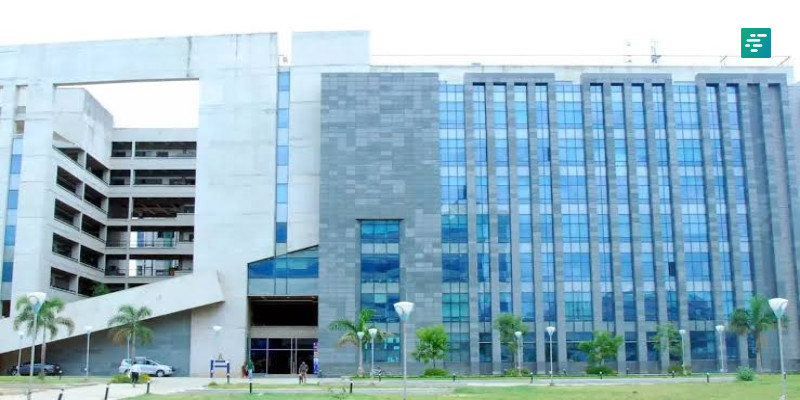
IIT Hyderabad Researchers Propose Use of GFRP Rebar and Discrete Fiber-Based Reinforcing System in Concrete Constructions for Improved Durability
- Campus Updates
- 02 Dec, 2023
- 1064
A recent report from the International Zinc Association (IZA) reveals that India incurs a loss of 5-7% of its GDP yearly due to steel corrosion. India, with its vast 7,500 km coastline and big metropolitan centres in the coastal regions, faces substantial hurdles in protecting steel reinforcement of concrete buildings and bridges from corrosion. Glass Fiber-Reinforced Polymer (GFRP) rebar is increasingly being used as an alternative to steel reinforcement because it doesn’t corrode, is lightweight and is non-conductive. These characteristics make GFRP rebars durable in corrosive environments, easy to transport and install, and beneficial for applications in electrical environments such as MRI Rooms, Rail Structures and Foundations of Transformers and Thyristors. Promoting sustainable infrastructure is essential as part of the 17 Sustainable Development Goals (SDGs) of the United Nations (UN). One such solution is using GFRP rebars in concrete construction, which can result in reduced maintenance, extended lifespan, and lower replacement costs.
The optimum design of concrete elements with GFRP rebars is essential for its effective utilization and for improving the safety of concrete members under different loading scenarios. Prof S Suriya Prakash's CASTCON Lab at the IITH has developed hybrid GFRP bars and discrete fibre-based reinforcing solutions to improve the performance of concrete members under different loading conditions. Discrete fibre addition improves the capacity and ductility of GFRP-reinforced concrete elements. Understanding the effect of fibres in reducing the brittleness of GFRP-reinforced concrete elements is essential to developing cost-effective solutions. The present research focuses on understanding the effectiveness of different types of macro fibres in concrete with varying dosages.
Prof B Murty, Director, IITH, congratulated the research team on this innovative GFRP-reinforced FRC system solution and added, "Increasing the service life of the civil infrastructure is essential for fueling our country's economic growth. Research on GFRP rebars by Prof Suriya Prakash and his team leads to the optimum utilization of GFRP rebars in concrete construction. This innovation has once again demonstrated IITH's zeal to contribute to serving Humanity at large".
Proudly presenting their GFRP reinforced FRC technique, Prof Suriya Prakash & Mr Ganapati M Patil, PhD Scholar, Department of Civil Engineering, IITH, said, "Combined use of GFRP bars and FRC is a very effective solution to improve the strength and deformability for concrete elements that can perform well even in a harsh corrosive environment. We have extensively carried out experiments to understand the behaviour of concrete columns and beams reinforced with different amounts of fibres and GFRP bars to optimize their performance. We are developing efficient analytical models to pave the way for the development of simple design guidelines that practising engineers could readily use."
Prof S Suriya Prakash and his team have published several research papers on understanding the behaviour of concrete elements reinforced with GFRP bars. They are helping the Bureau of India Standards to develop standards for promoting the use of GFRP rebars. Additionally, Prof S Suriya Prakash and his team are extensively working on various industry-relevant research, including Hybrid FRP Systems for Structural Strengthening, developing lightweight Precast Panels, and Ultra High-Performance Concrete (UHPC).
